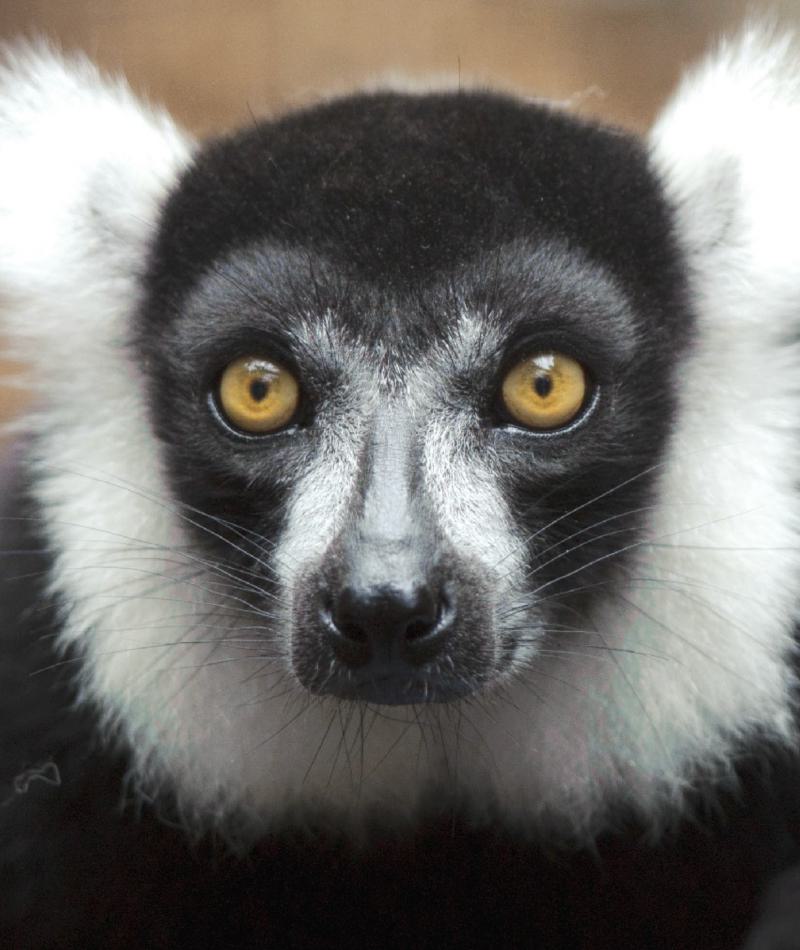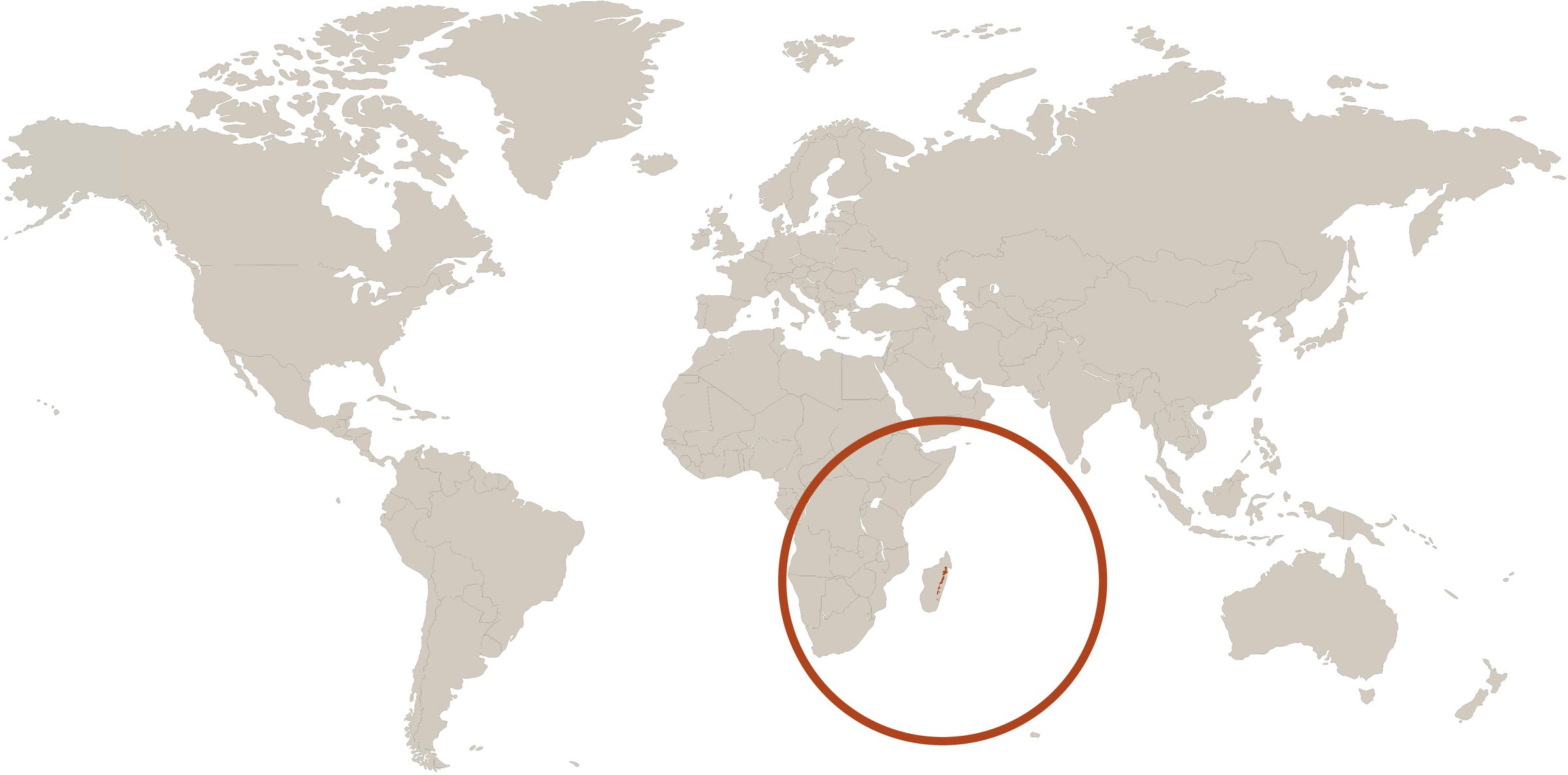
Black and White Ruffed Lemur
Varecia variegata
Did you know?
- Black and white ruffed lemurs are a part of the Lemuridae family, which they share with many other true lemur species.
- They are named for the white ruff of hair that runs from the ears along the cheeks to beneath the chin.
- Ruffed lemurs are among the largest lemurs.
- Black and white ruffed lemurs are the world's largest pollinators.
- A female will give birth to a litter of up to 6 babies, with the average size being 2 to 3 infants.
Adaptations
Black and white ruffed lemurs are among the largest of the lemurs. The body is nearly two feet long from head to rump, with a tail equally as long. Their large size helps them have dominance over other lemur species. Excellent climbers, they often gather fruits and vegetation high in the treetops, even dangling by their hindlegs when necessary. They have a highly developed vocal range, which they use along with scent marking as their main form of communication.
Young and Family
Ruffed lemurs are social. They live in communities that can range from two to 16 animals. Adult females are dominant over males. The makeup of a ruffed lemur group is not rigid, and it may change according to availability of food sources.
Breeding season for ruffed lemurs is in the summer. Right before giving birth, a female will make a nest 30 to 60 feet from the ground in a tree. After a three-month gestation, she give birth to a litter of up to 6 babies, with the average being 2 to 3. Baby ruffed lemurs stay in the nest for several weeks, and when a mother moves her young, she will carry them in her mouth. Females tend to stay close to the center of their group's territory from breeding season through the first several weeks after giving birth. But babies mature rapidly.
Threat Level
- Unknown
- Common
- Near Threatened
- Threatened
- Endangered
- Critically Endangered
- Extinct in the Wild
Critically Endangered
The Black and White Ruffed Lemur faces an extremely high risk of extinction in the wild.
Range
Eastern Madagascar
Habitat
Rainforests

We care about black and white ruffed lemurs
Both ruffed lemur species are in danger of extinction. The Saint Louis Zoo participates in the Species Survival Plan for black and white ruffed lemurs, a cooperative breeding program that helps ensure a healthy population of animals, and we support them in Primate Canopy Trails and the Primate House at the Zoo. Through the Saint Louis Zoo WildCare Institute Center for Conservation in Madagascar, we help the Madagascar Fauna and Flora Group conserve Madagascar's endangered species. Learn more about how we are helping lemurs in the wild.
Find this animal in Historic Hill

SAINT LOUIS ZOO ZONE
Historic Hill
Historic Hill is a lovely stroll through one of the oldest parts of the Saint Louis Zoo. From the 1904 World’s Fair Flight Cage to the Spanish architectural flavor of the 1920s in the Bird House, Primate House and Herpetarium to the finishing touches of our thoroughly modern exhibits, this area of the Zoo has a unique ambiance and a nostalgic history that make it a great destination.

